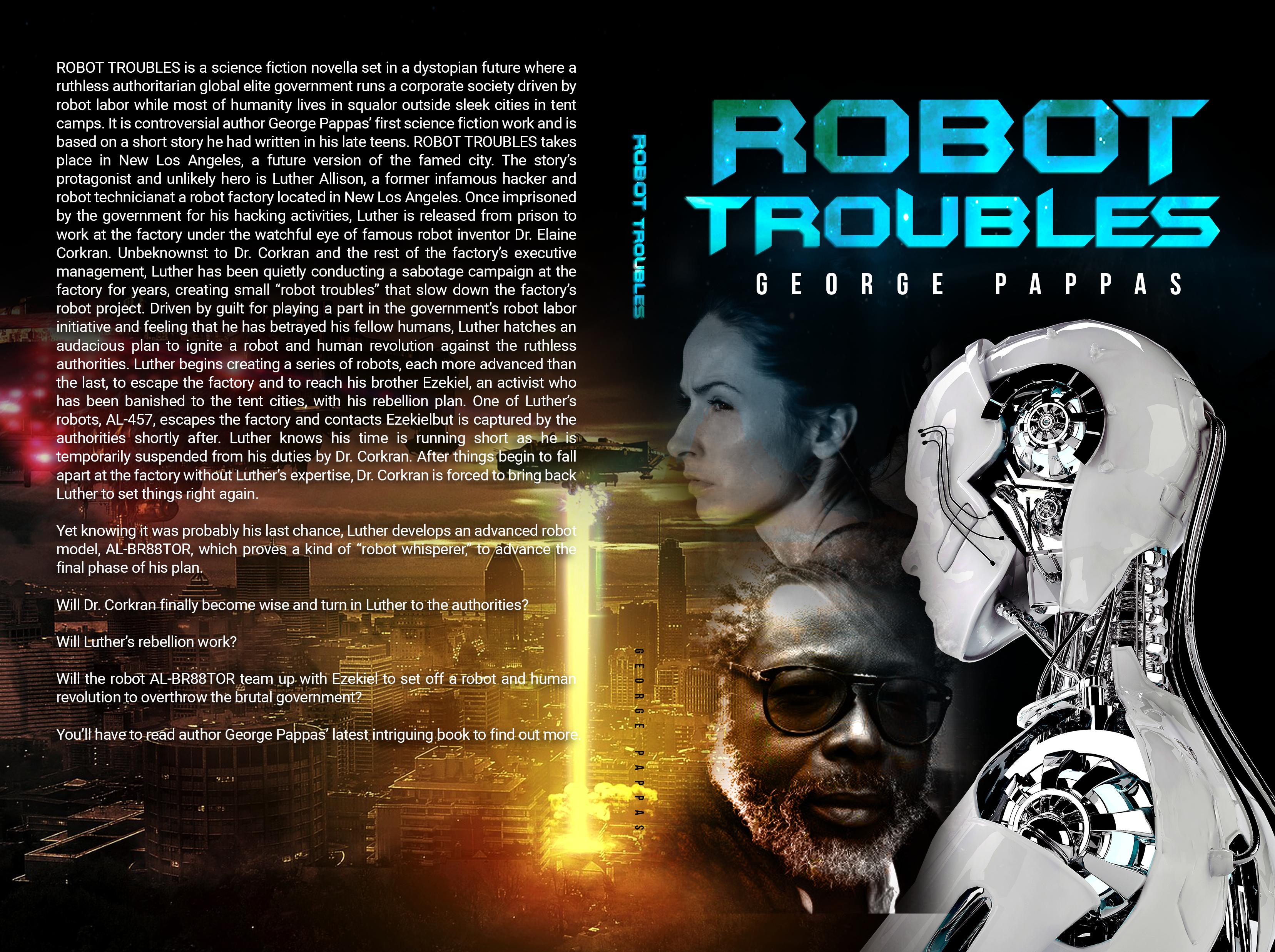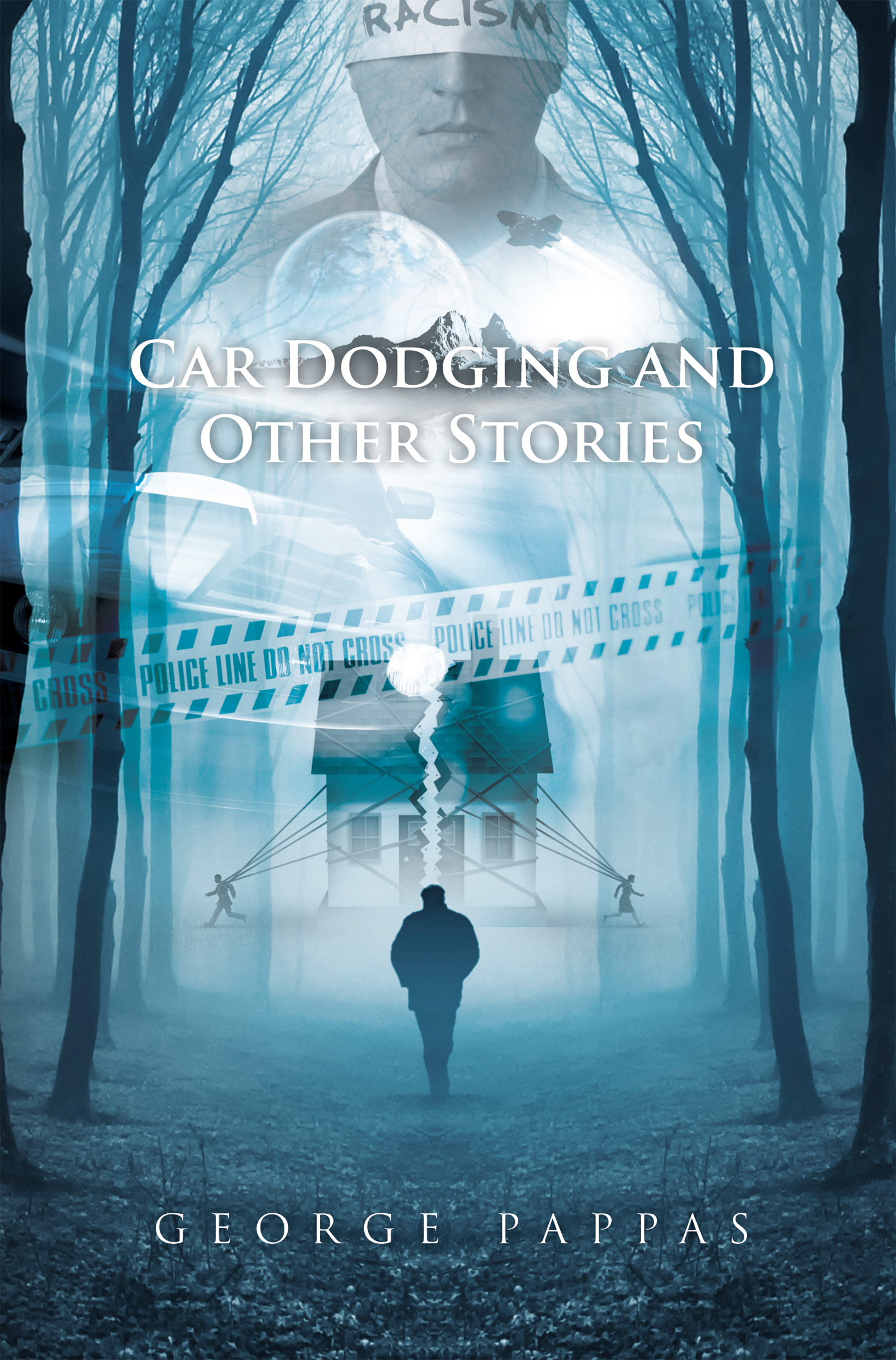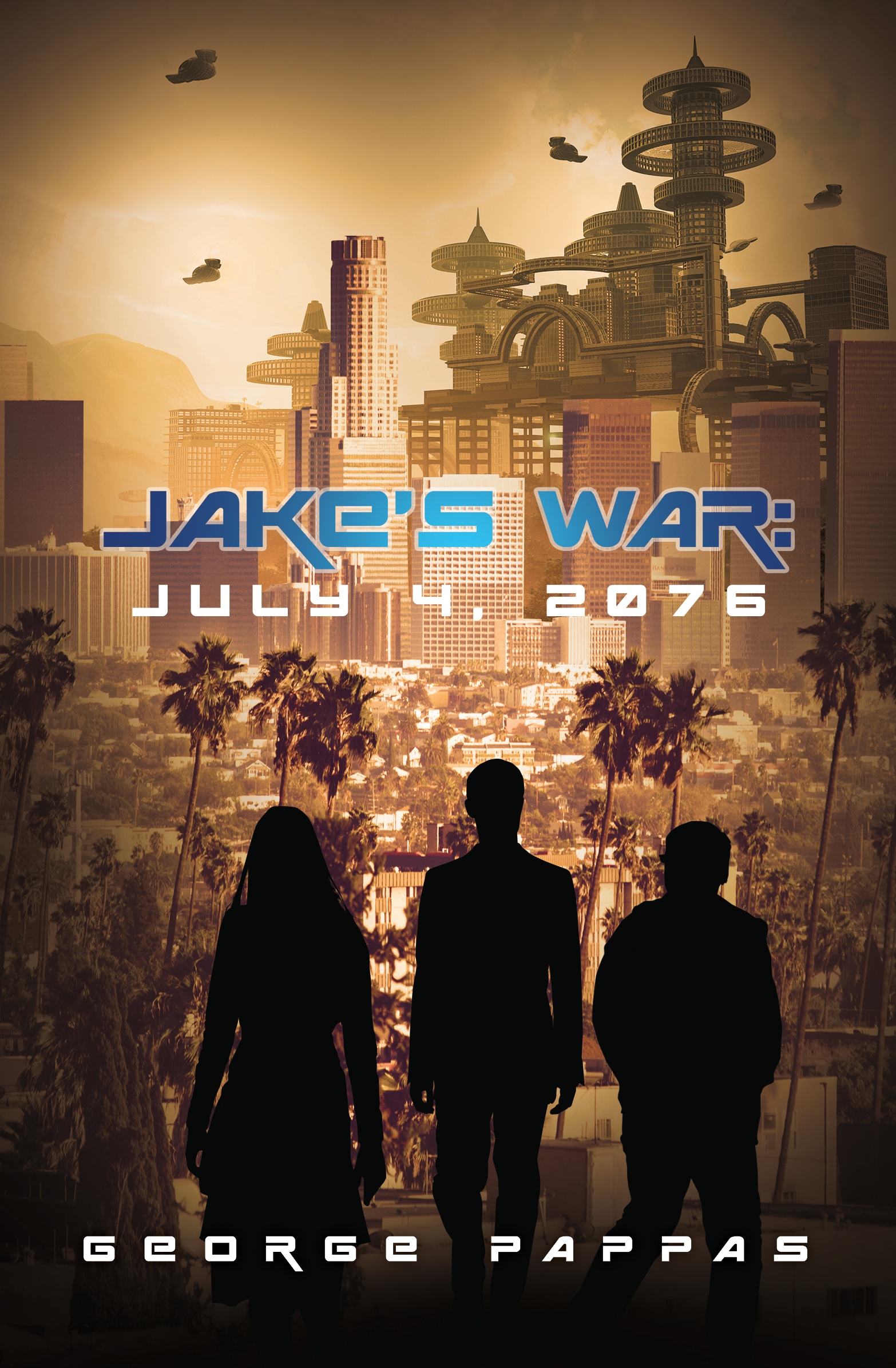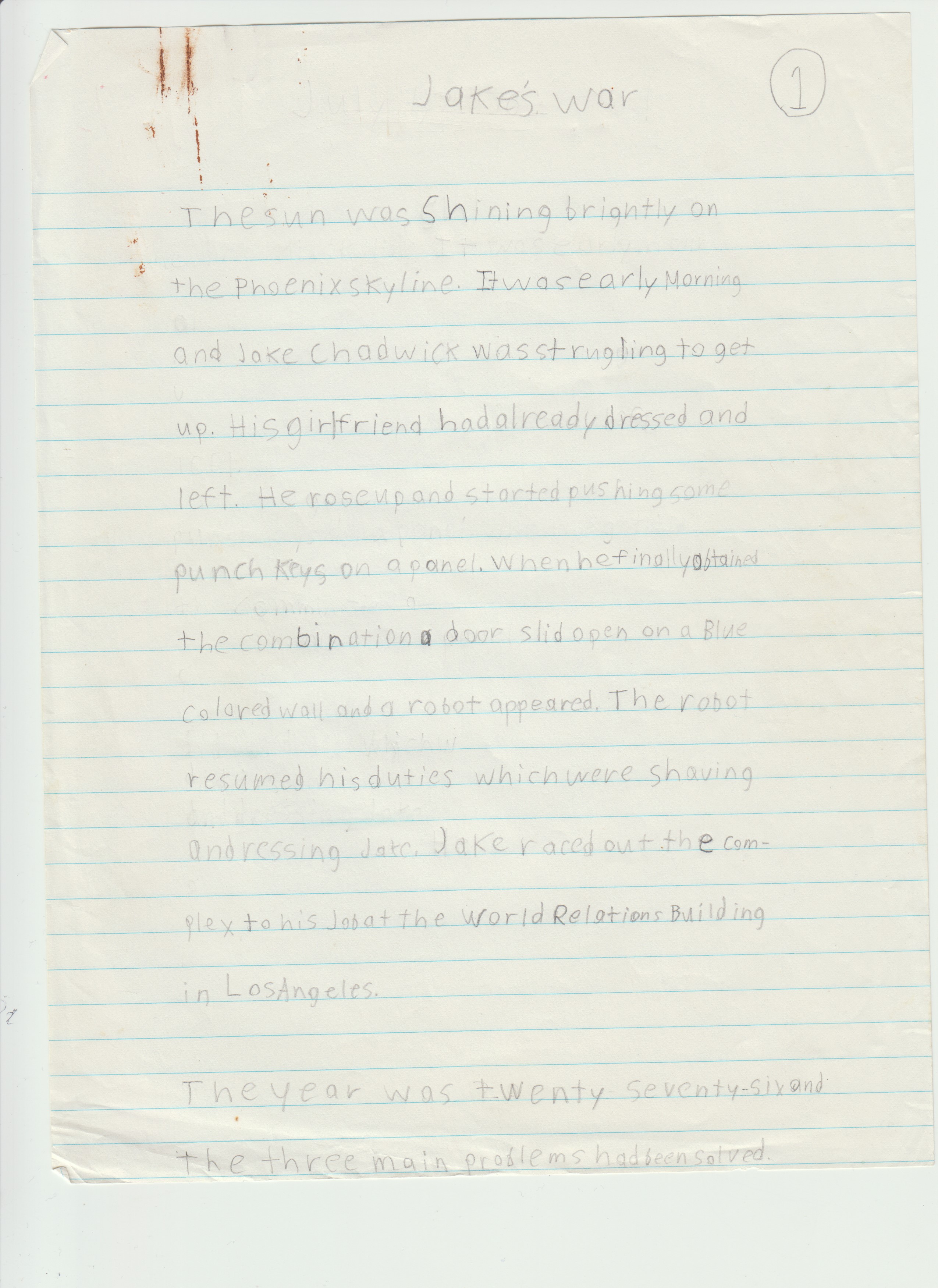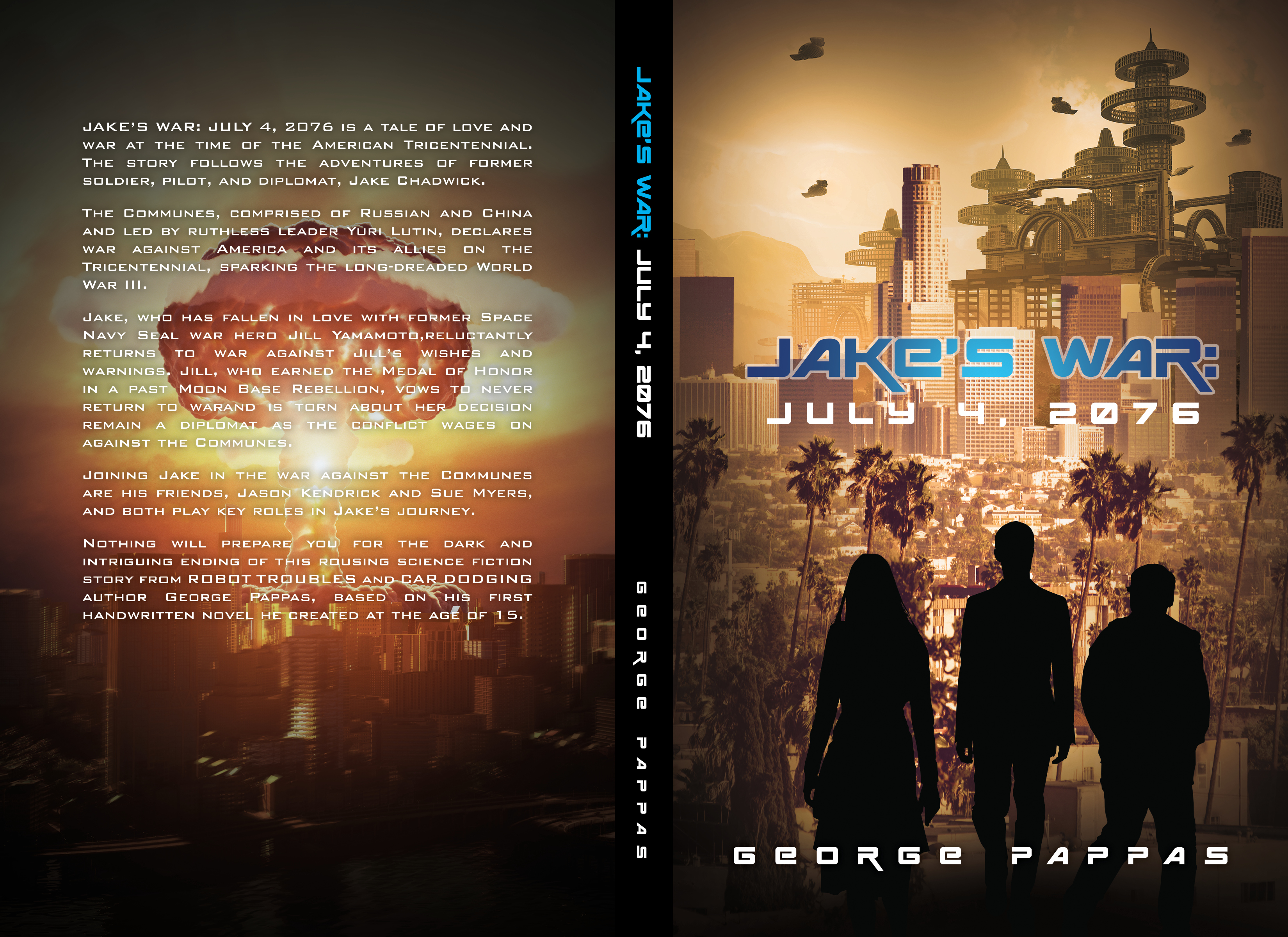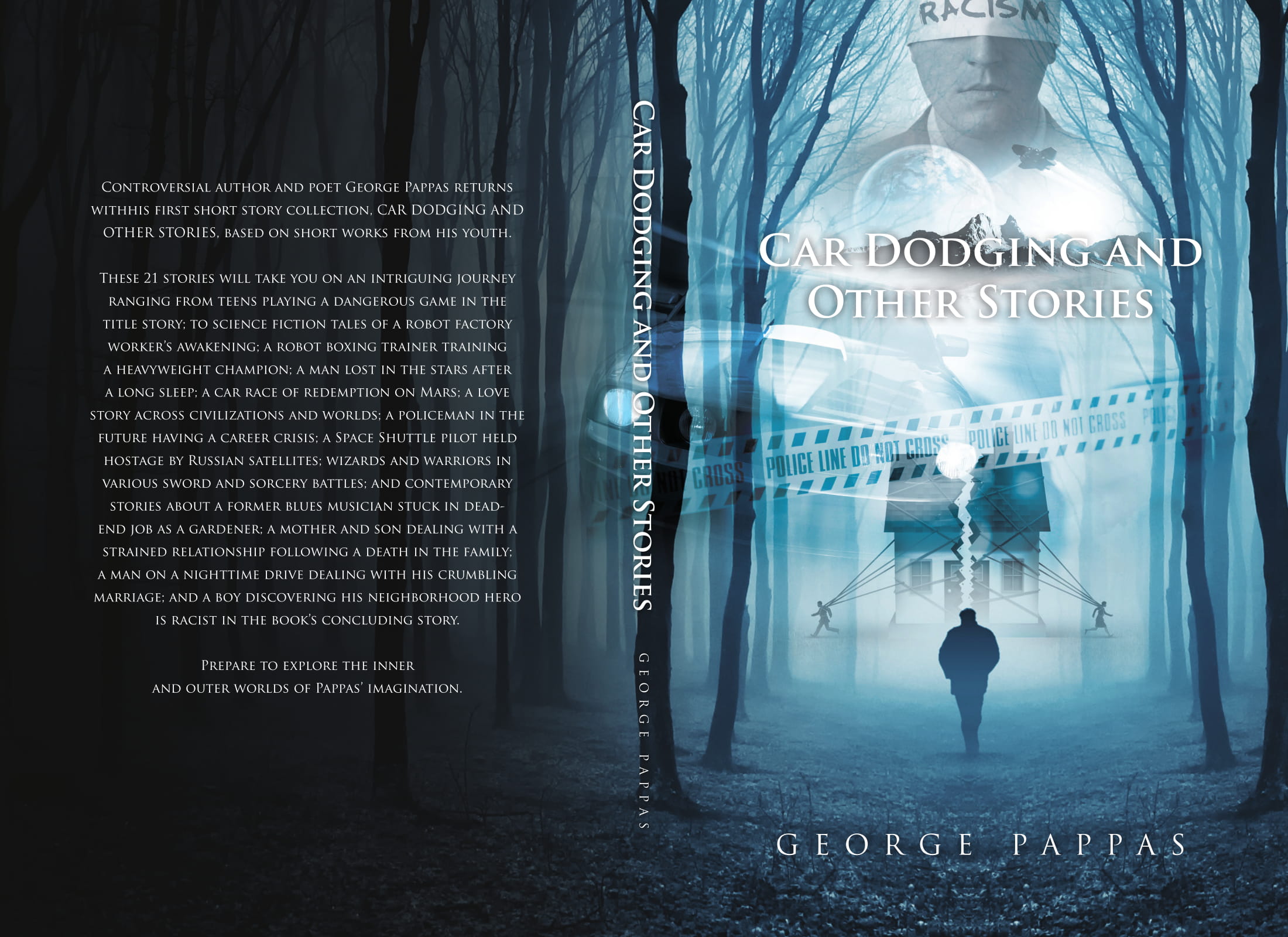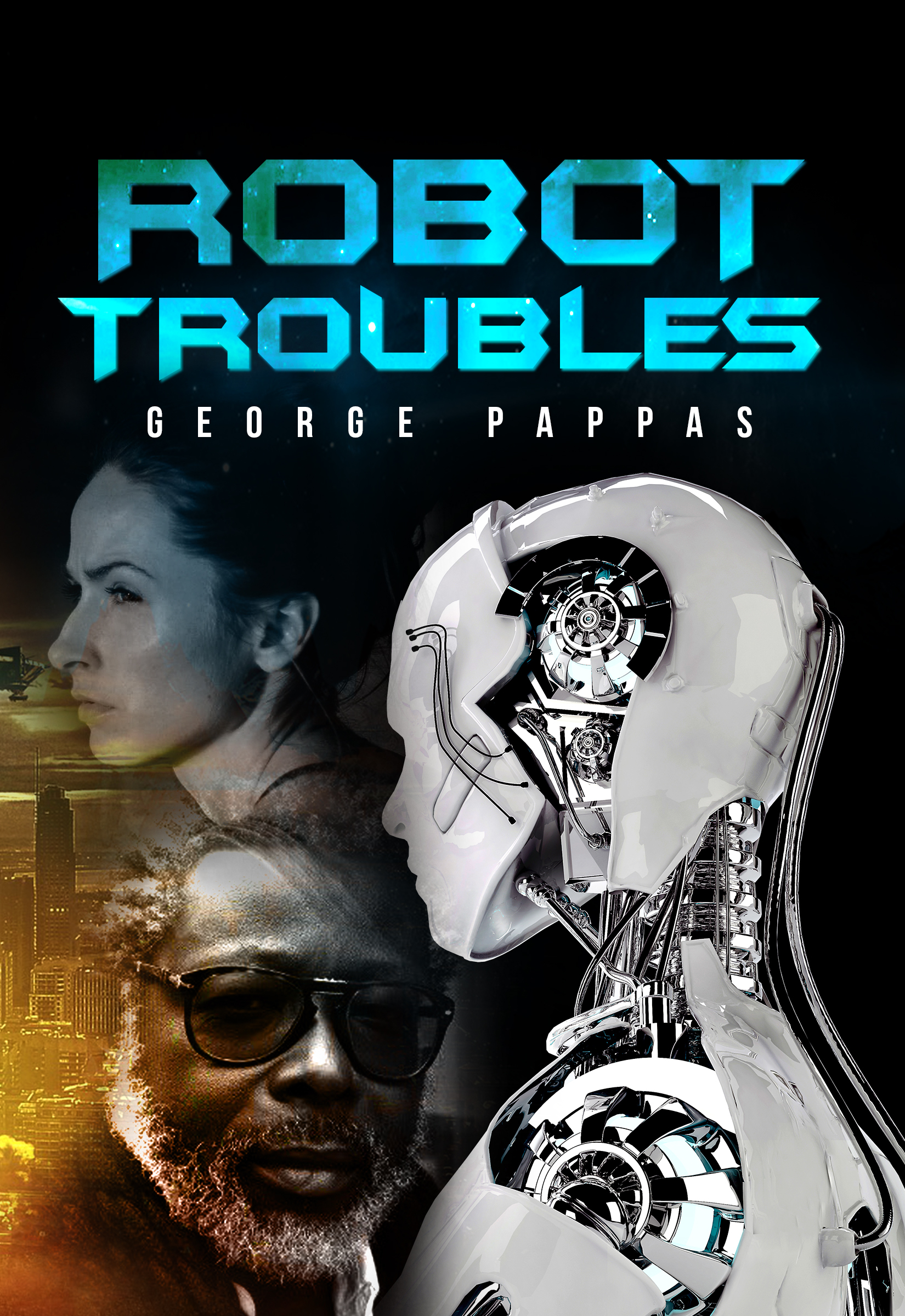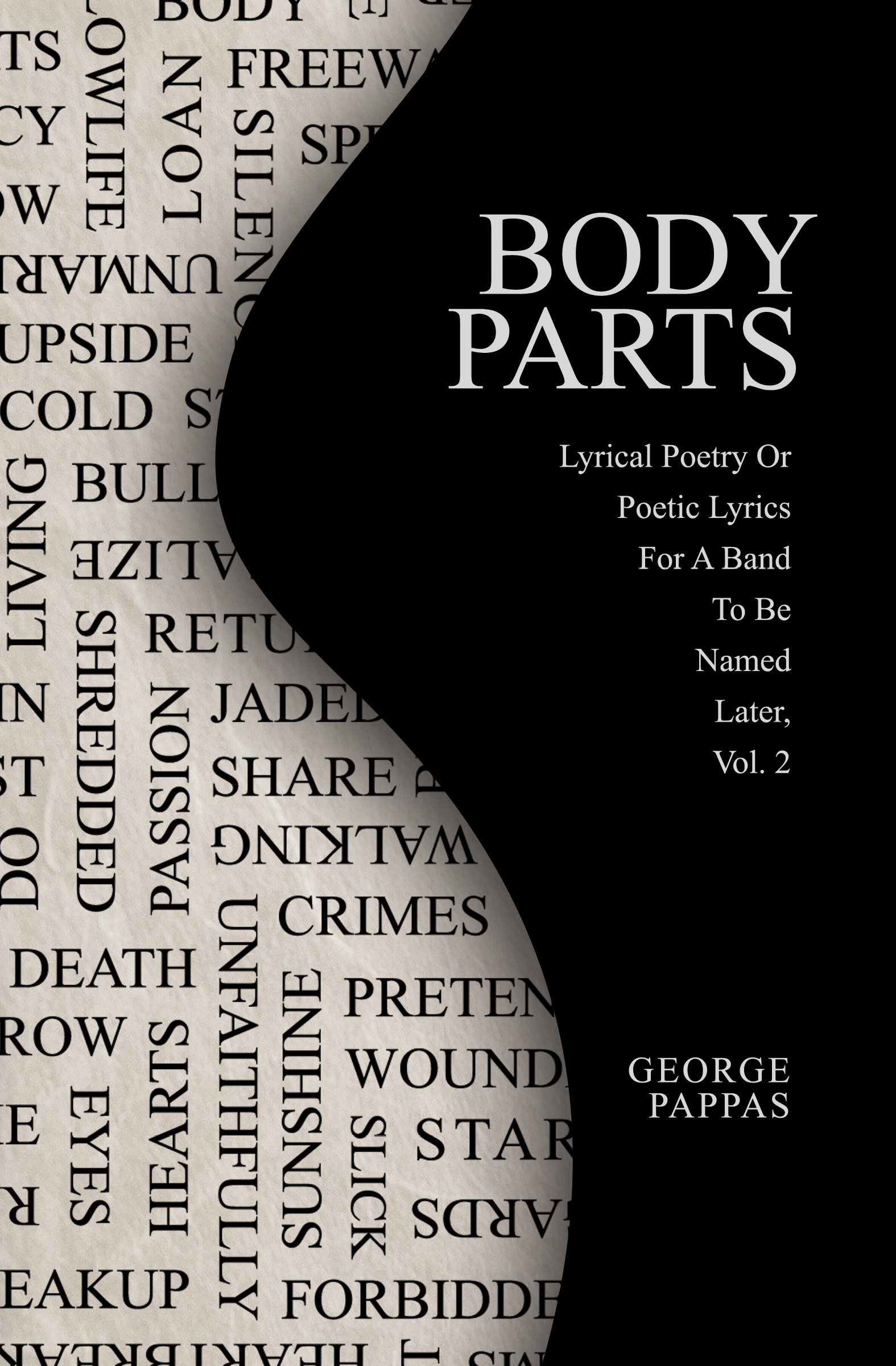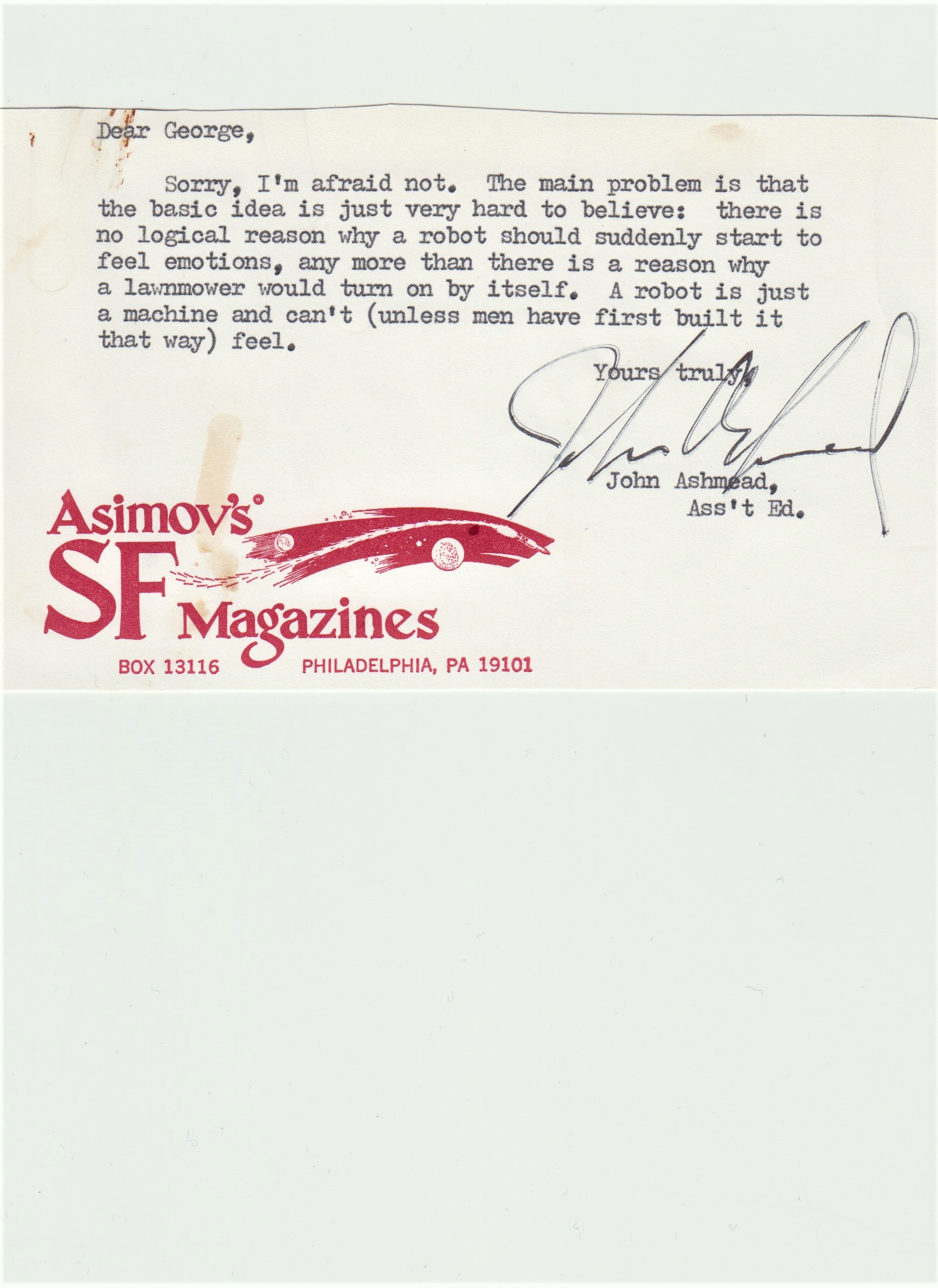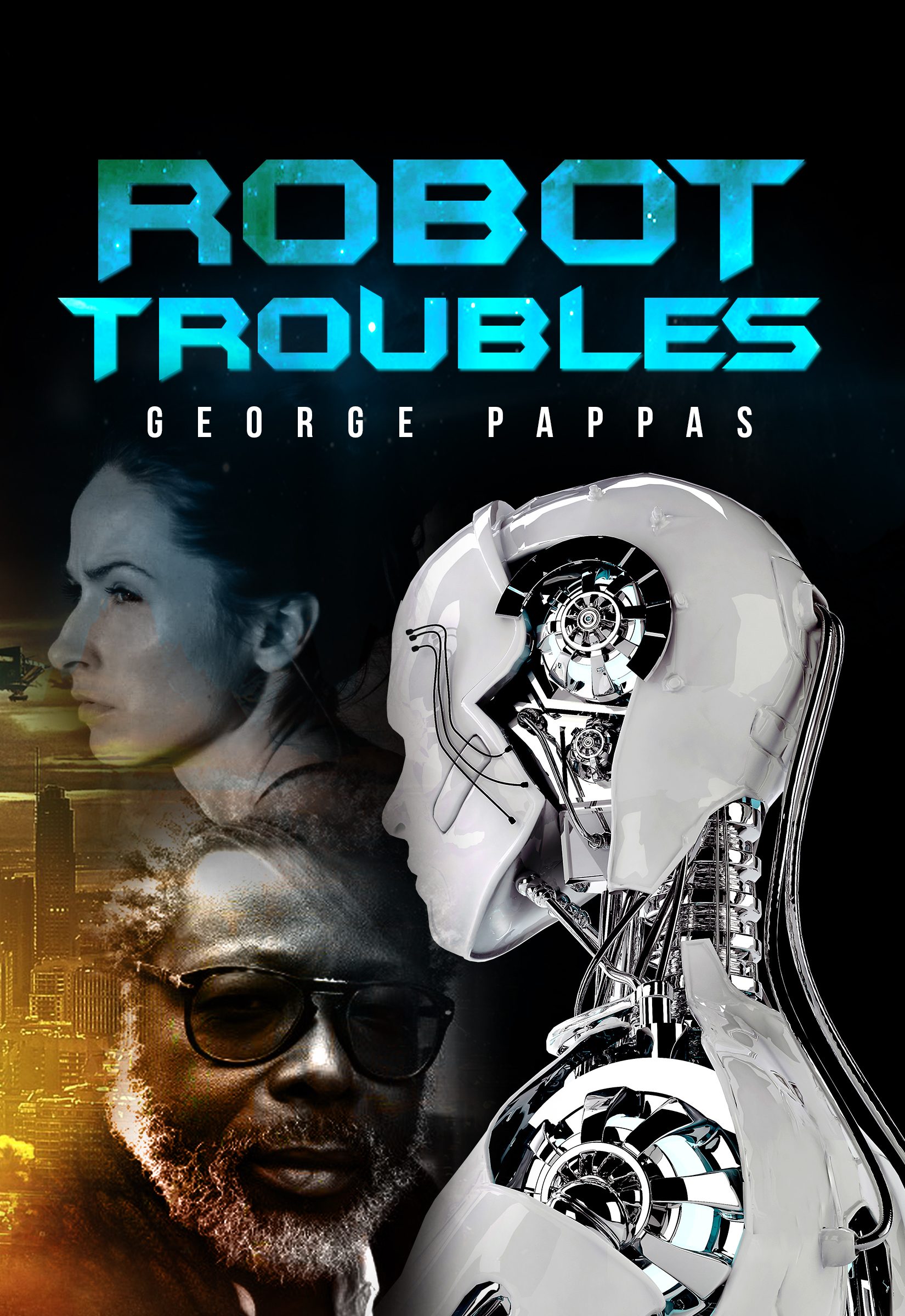
Dear readers,
I wanted to share an excerpt from my indie science fiction novella ROBOT TROUBLES.
This following key section is from Part 1, A Robot’s Awakening, where we first meet Luther Allison and Dr. Elaine Corkran and the robot AL-357 which has an awakening that leads to its journey of discovering a different world outside its dreary factory assembly line existence.
Enjoy.
GP
+++
In a cramped room, just off the factory floor, worked Luther Allison, a robot technician in charge of the robots’ ongoing maintenance and upkeep.
A short and stocky man in his late forties, appearing much older than he was, Luther had dark hair, brown eyes, and a graying beard. He typically wore a skeptical look on his face and his voice boomed when he laughed. He thought of himself as the chief robot technician, but he didn’t have an official title. He was just another technician in the eyes of the company management except for Doctor Corkran.
Luther worked closely with Elaine Corkran, the director of robotic programs at the factory and a famed inventor of innovative robotic technology. Her inventions and patents alone had made herself and the company a fortune. Elaine was a tall slender woman in her late forties, standing a little over six-foot-three, with dark hair and piercing blue eyes. Her studious appearance and distant demeanor belied a compassionate and kind nature that she had to disguise in a cut-throat business world that was still dominated by men.
Everyone at the factory, including Luther, the foremen, and even the robots, called her Doctor Corkran. She figured it was a term of respect and actually preferred it to her colleagues using her first name, which seemed too informal to her.
However, Luther wasn’t impressed with Doctor Corkran or her credentials. He thought of himself as the real talent that backed up Doctor Corkran and made her look good. An underlying hostility existed between Luther and Doctor Corkran.
Although she respected his abilities, Doctor Corkran didn’t trust Luther. She had good reason for her suspicion as Luther was an ex-convict that had hacked numerous servers and websites. He had come to work at the factory five years before as part of an early prison release program.
What Doctor Corkran and the company didn’t know was Luther had been on a quiet sabotage campaign at the factory for years. A little fix here, a little tweak there and one of the robots on the line would malfunction slowing down production. Over time, Luther’s “little fixes” would cost the company millions in repair costs and lost production time.
“The fuckers,” Luther would chuckle to himself. “They still don’t what has hit them.”
Luther was blamed for the production breakdowns from time to time, but they couldn’t find any evidence of his tampering. Doctor Corkran was secretly convinced Luther was behind the series of robot problems, but she also couldn’t discover any trace of Luther’s sabotage efforts. Despite her suspicions, Doctor Corkran had a fondness for Luther. She felt he was a brilliant but misguided soul who had made mistakes in the past and he deserved a second chance.
In his former life, Luther was a famed and feared computer hacker. He called himself “the Black Plumber.” On one weekend, he stole $50 million from the banking system before anyone knew it was gone. They never did get him for that one. A lot of the money was still stashed away in hidden bank accounts around the world and was still unaccounted for by the authorities. Thinking about how he fooled the authorities always brought a smile to Luther’s face.
Clueless fools, Luther thought. One day I am going to disappear and they will never find me.
Luther also had hacked into government defense systems and wrecked havoc. One night he nearly caused an accident as the government’s defense threat level was raised to its highest alert with aircraft and missiles being readied for attack before Luther let them know the gig was up. That last stunt landed him in the penitentiary for a long haul – 25 years to life. However, he was eligible for early release following several years after agreeing to work with Doctor Corkran at the first of several new robot factories the government was pushing as the industry of the future.
The move toward robotics greatly benefitted corporations around the world as the top leaders had already consolidated their countries into one world government many years before. What was once the United States of America had become the leading country in a united world government, which had moved away from democratic principles into a more authoritarian system.
Unfortunately, a lot of Luther’s family and friends lost their factory jobs because of the robots. Luther felt like a traitor sometimes for helping the authorities so he was determined to throw a monkey wrench into their robot plans when he could.
“I’ll be the thorn in their ass,” he joked to himself.
Even though he knew he was an ex-convict and hardly above suspicion, Luther surmised that they wouldn’t think he was capable of messing with their advanced robotic systems. Luther lived for proving people wrong.
Luther’s favorite pastime was altering the robots’ behavioral systems. He saw it as attempting to change how the robots thought about their work and the world around them. It was Luther’s hope that one of his robot projects would eventually escape the factory and cause trouble in public. He figured that if it happened enough times that the company, and maybe even the authorities, might reconsider the robot program and hire back some of the humans.
Luther’s dream was to ultimately create a completely self-aware robot that would resist the factory work altogether and set off a robot rebellion, but AL units were made of basic robotic technology that made it nearly impossible to pull off. Still, Luther was determined to keep trying to surprise “the fools.”
In AL-357’s case, Luther reprogrammed the unit adding conflicting commands to force it to question the entire factory work enterprise. Luther viewed it as bringing a disgruntled worker’s personality to the robot’s functioning to cause it to either rebel, shut off or be forced to be shut down. Either way, Luther expected there to be ongoing trouble with AL-357. He was counting on it.
The workday seemed unusually long for AL-357. Several times during its work, AL-357 stopped performing, eliciting loud reprimands from the human foremen watching the robots’ progress. AL-357 couldn’t reconcile its internal commands to continue working.
The unit was experiencing the robot equivalent of frustration and fatigue. The robot’s systems were on the verge of overload as a flurry of conflicting commands had left AL-357 resisting the order to return to the sleep room, as the humans in the factory called it after its work was completed.
AL-357 watched in the distance a group of human managers walking away from the assembly line area and leaving the plant. It had never noticed them leaving before.
“Where do they go?” AL-357 wondered.
The robot found the urge to explore difficult to ignore.
“What is happening to me?” the robot said as it moved slowly in the direction of where the humans went instead of returning to the sleep room as it always did.
It was scheduled for a systems checkup with Doctor Corkran, but the robot also disregarded this command.
The humans rarely visited the sleep room at night, not even the foremen or factory management except for Doctor Corkran, so the robot would not be missed for a while. AL-357 overheard one of the humans saying that they avoided sleep room whenever they could.
“I have to babysit these robots all day,” the human explained to one of his co-workers. “I am not going to do it at night, too. You know it took a lot to convince the management not to force us to take night shifts watching the robots. I mean where are they going to go anyway?”
AL-357 couldn’t explain its need to break from its programming and not return to the sleep room. An overriding command to leave the factory drove the robot, even though it was forbidden by factory management for any unauthorized robotic worker units to do so. It was all part of Luther’s efforts to muck up the factory’s process.
“There must be another way out,” AL-357 said, scanning a blueprint map of the factory conveniently stored in its memory by Luther.
The robot quickly found a promising exit, an unused door that was an old garbage pickup before the company had put in a newer tube system that sent the plant’s waste directly to the city’s depot.
“Eureka,” AL-357 said, not comprehending why it elicited such a response.
A short time later, AL-357 eluded the detection of the several human guards and electronic security in the factory as the security was designed to bar intruders or possible saboteurs from entering the factory and not for keeping the robots from escaping. As the robots were programmed as basic worker models, escape was figured by factory management to be highly unlikely. No robot had ever tried to escape from the factory…until now.
AL-357 stood in front of a large metal door that was covered in grime and still smelled of garbage even after years of non-use. AL357 reached up to push open the door but hesitated. A warning command from an old program temporarily confused the robot, but it was quickly overridden by another more recent command again urging AL-357 to explore. AL357 was waging a war inside against itself, as conflicting commands again threatened to shut it down. The robot waited there hesitating.
Was AL-357 even a basic robot anymore? Its systems were overloading as it experienced the robot version of what amounted to fear and then exhilaration. Could a robot experience an emotional breakdown? These were human emotions, which despite Luther’s best upgrade efforts, still taxed AL-357’s limited technological capacity only adding to its confusion.
Finally, after a short while, AL-357 straightened up and moved forward, pushing against the old door until it creaked open. AL-357 stepped through the door and into a metallic corridor. The robot stared at the shiny corridor walls for a long time. AL-357’s response was like that of a newborn baby first viewing the world. The robot responded with wonder, but this was a reaction that only high-end androids exhibited, as their systems are designed to mimic and learn such human-like emotions. Wonder was supposed to be beyond AL-357’s capacity, but it exhibited the emotion all the same.
A distant sound abruptly ended AL-357’s reverie with its new environment. The robot turned to look toward the noise and saw two human figures approaching. AL-357 turned away and moved quickly in the opposite direction from the approaching humans. It was fear that drove it, a command for AL-357 to avoid human contact, if possible, on its journey.
AL-357 walked through the corridor for the longest time before seeing a distant speck of light ahead. As AL-357 neared the light, it become a large open space that led to a plaza beyond.
“Humans,” AL-357 said.
However, there was no avoiding humans this time. The plaza was filled with human inhabitants of a large surrounding city.
Everywhere AL-357 looked it saw humanoids. It had never seen so many in one place. The robot had heard that there were other humans besides those that worked in the factory from listening to the foremen and others talking as it worked, but it had no way of knowing until now. AL-357’s memory files contained scant history or basic information about the surrounding world or humans it serviced. That was how the factory management had designed it. Luther had to be careful not to upgrade the robot too drastically to avoid drawing Doctor Corkran’s attention. The factory’s robot breakdowns had to seem organic in nature and not appear to the result of Luther’s tampering.
Looking closely at the humans, AL-357 noticed they seemed different from those it had contact with previously. The humans in the plant, except for Doctor Corkran and a few others, appeared grisly and hideous by comparison. A lot of them had facial hair, wore old and torn clothes and usually carried on in a loud and abusive manner. These humans fascinated AL357 with their beauty.
Dispelling any lingering doubts, AL-357 left the corridor and entered the plaza. Although it wasn’t illegal for robots to roam in public on their own, it was not a typical occurrence, especially with AL units. They were usually accompanied by a human guide. Some of the humans in the plaza stared at AL-357 in disbelief, while others hardly noticed.
Nearby a huge visual digital map display of the city stood. The city was called New Los Angeles. It was completely rebuilt where the old Los Angeles existed by the new government many decades before. All the landmarks of the past city were removed and the only access to the Pacific Ocean was granted to the elite members of its society. The authorities completely remade the former City of Angels into a modern marvel that didn’t resemble the previous destination. There was no trace left of the Los Angeles that was built on top of a desert. It rarely rained as in the past, but drought was hardly an issue now for the city’s wealthy inhabitants as water was created and recycled through the development of new technologies to supply the city with an endless water supply.
AL-357 was not aware of the city’s past history as it moved toward the map, stopped and scanned the details into its memory. Leaving the digital map display, AL-357 continue to navigate its way through the plaza which widened into a large green area. AL-357 was curious to explore this green expanse and discover its purpose.
Soon after, AL-357 moved along a large stretch of grass and among huge trees. It was a stark contrast from the drab and colorless environment of the factory. It was autumn, but the air still retained some of the previous summer’s heat. It was commonly referred to as an Indian Summer. A slight breeze rustled the trees and some leaves fell to the ground. AL357 was spellbound by the falling leaves.
“Hello,” it said to some of the fallen leaves it had picked up from the grass. The robot was unsure what the leaves or trees were. There was no record of leaves or trees in its memory. Only humans were described as organic beings to be obeyed, but the robot experienced conflicting commands when it came to humans. It was not so clear-cut anymore. It wanted to obey but then sometimes it didn’t. Such confusion threatened its breakdown, but AL-357 couldn’t ignore the mysterious demands that conflicted with its main directive to serve humans’ needs above all.
“Are you organic beings?” AL-357 asked the leaves.
Abruptly hearing a sound, AL-357 turned from the leaves and trees and saw a group of humans on the grass nearby. AL-357 headed toward them and noticed that one of the humans held a small wooden stick and another had a small white round object in its hand. AL357 wondered what kind of human ritual this was and if it resembled the robot ritual of the sleep room. As AL-357 watched the humans at play, chasing a white orb around the field, it experienced something beyond curiosity. AL357 realized it was free from the factory, even if only for a short while, and finally aware of a new world around it, hinting of new discoveries. The robot didn’t fully comprehend what it was watching, but it was recording everything into its memory for later review and analysis.
Hours later, Al-357 was reluctant to return to the factory even though it knew it had to. This was only supposed to be a short journey and AL-357 couldn’t override this command developed by Luther or it would automatically shut down. It was a fail-safe function Luther created in case the robot got lost or refused to return. This was the initial exploratory phase of Luther’s larger plan to determine if he could devise a robot to venture from the factory. Luther knew it was risky to attempt a longer trip until he had developed a more advanced robot model. He also continued to worry about having his plan discovered before he had enough time to fully implement it.
AL-357 had been exposed to a human world that it never knew existed. Now it wanted to know more about this human existence beyond the factory confines. AL-357 returned to factory and sleep room later that evening without being detected by factory security.
Later in the sleep room, AL-357 resisted shutting down for the night. It kept reviewing the images of its journey it had stored in its memory. The humans the robot encountered on its adventure fascinated AL-357. The robot continued its review until the start of next work day, which it began with another strong bout of robot malaise and disgruntlement just as the previous morning.
###
